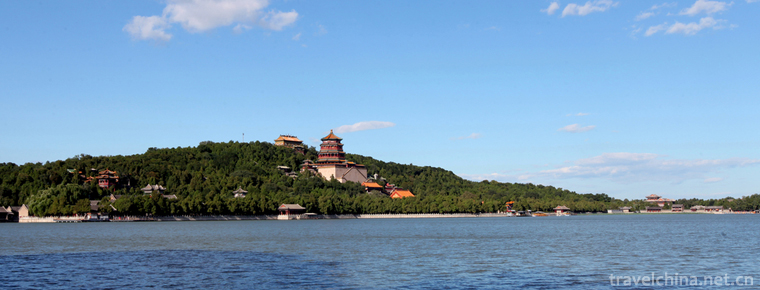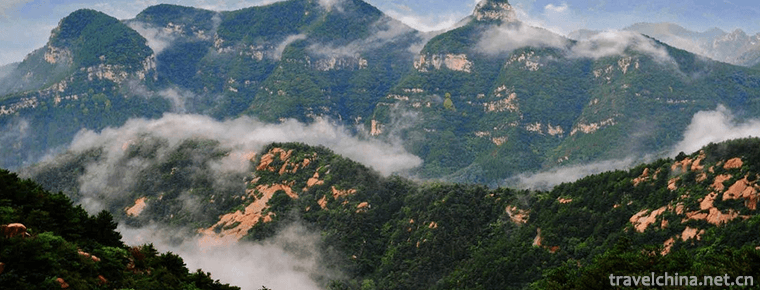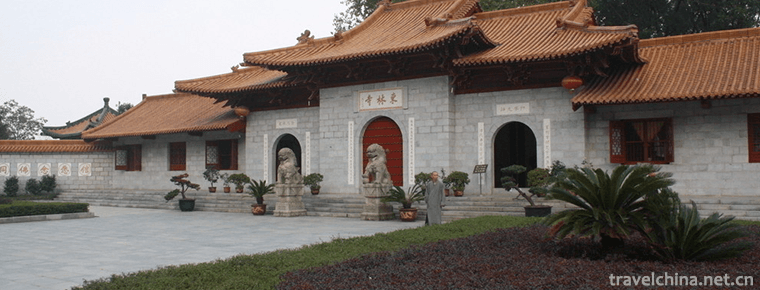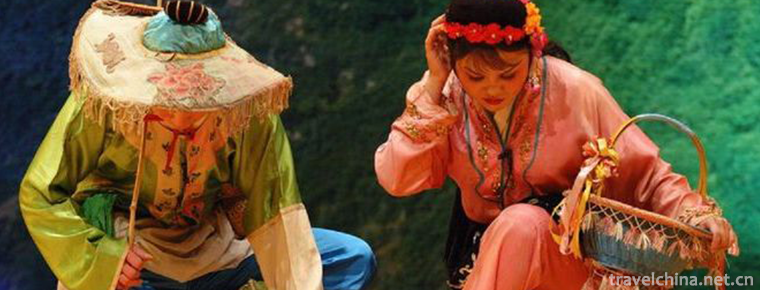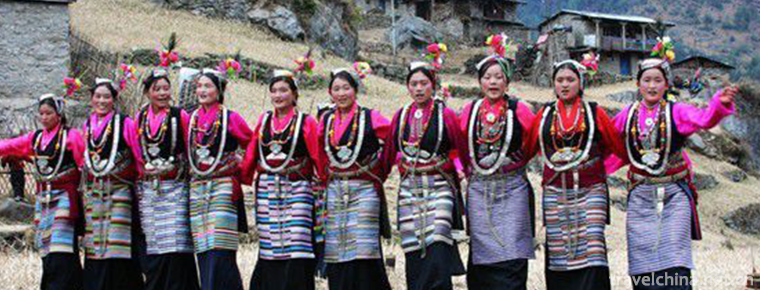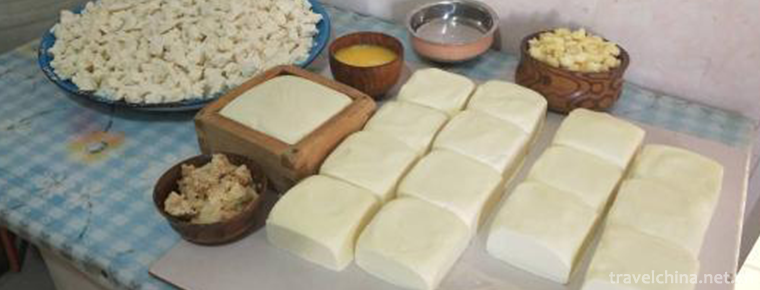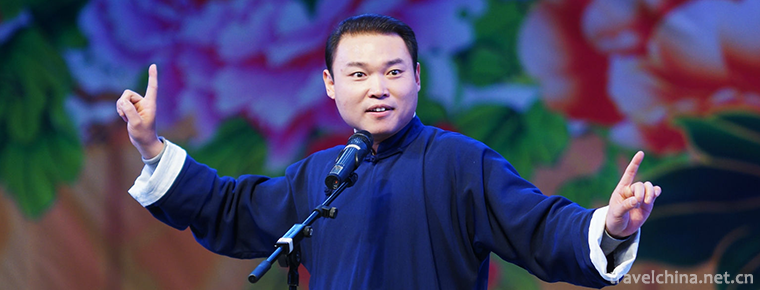Tiger Leaping Gorge
Tiger Leaping Gorge, known as "danger", is one of the deepest canyons in China. The Tiger Leaping Gorge can be divided into Shangri-La and Lijiang sections. Shangri-La Tiger Leaping Gorge is a national AAAA-class tourist scenic spot, which includes the upper, middle and lower Tiger Leaping Gorge and high-way hiking.
Tiger Leaping Gorge is located in the town of Tiger Leaping Gorge in Shangri-La City, 96 kilometers away from Shangri-La City, 80 kilometers away from Lijiang City. The Jinsha River, which originates from the snow mountain of Dandong, Qinghai, is a long way from here.
Suddenly encountering the obstruction of Yulong and Haba snowy mountains, the calm and peaceful river water suddenly became irresistible. Tiger Leaping Gorge is the largest canyon of the Yangtze River in Wanli. It was named after the legend of the Tiger Leaping over the river from the heart stone to the river between Haba and Yulong snowy mountains. 3900 meters below the water rock roar, 216 meters short distance drop, with its high mountains, deep, steep and steep.
There are gas stations on the way from Lijiang to the scenic spot. There are no banks and medical facilities in and around the scenic spot, so everyone should prepare in advance. Tiger Leaping Gorge is 80 kilometers away from the downtown area of Lijiang City. It is 17 kilometers long in the upper reaches of Jinsha River. It is divided into three sections: Tiger Leaping, Middle Tiger Leaping and Xiahu Tiger Leaping. The road is 25 kilometers long, the snow mountain of Yulong is in the east, the snow mountain of Haba in Shangri-La City is in the west, and the vertical elevation difference of the canyon is more than 3,900 meters. It is one of the deepest canyons in the world. The narrowest part of the river, only about 30 meters, legend has it that the tiger down the mountain, in the river on the reef slightly raised feet, you can fly over, so called Tiger Leaping Gorge. There are 18 reefs in the gorge, 7 dangerous banks and 10 waterfalls, up to 10 meters.
Hutiaoxia gorge at an altitude of 1800 meters; Yulong Snow Mountain on the south bank at an altitude of 5596 meters, the side of the gorge is steep, almost cliff, no road to find; Haba Snow Mountain on the north bank at an altitude of 5396 meters, the side of the gorge slightly gentle slope, this side of a simple gravel road, through the whole gorge, there is a footpath above the road. Shanghhutiao is the narrowest section of the canyon, 9 kilometers away from the highway town of Tiger Leaping Gorge. Its core lies on a boulder, lying in the middle of the stream, like a fallen waterfall and a high ridge standing in front of us, dividing the torrent into two parts and shaking the sky. Legend has it that a tiger once leaped from the side of Yulong Snow Mountain to Haba Snow Mountain by taking advantage of this huge rock in the center of the river, so the stone was named Tiger Leaping Stone.
Down the tiger. Xiahu Tiger Leaping has a huge depth of 1,000 meters. It is near the exit of Tiger Leaping Gorge. It is the best place to enjoy Tiger Leaping Gorge.
When entering the Tiger Leaping Gorge in Lijiang, Yunnan Province, it should be from Dawu Township, Yulong Naxi Autonomous County, Lijiang City. This is actually the Xiahu Tiger Leaping Gorge area. Tiger jump through the tiger jump, tiger jump on the Tiger jump Daqiaotou Town, Dayou Township to visit Tiger jump Gorge, Lijiang area bus passenger station tickets, ticket prices about 23.5 yuan. Tiger Leaping Gorge tickets are 65 yuan.
In October 23, 2005, China's most beautiful place list was released in Beijing. The ten most beautiful canyons in China were Yarlung Zangbo Grand Canyon, Jinsha River Tiger Leaping Gorge, Three Gorges of the Yangtze River, Nujiang Grand Canyon, Meili Grand Canyon of Lancang River, Tailuge Grand Canyon, Shanxi-Shaanxi Grand Canyon of the Yellow River, Jinkou Grand Canyon of the Dadu River, Taihang Mountain Grand Canyon, and Kuche Grand Canyon of Tianshan Mountain.







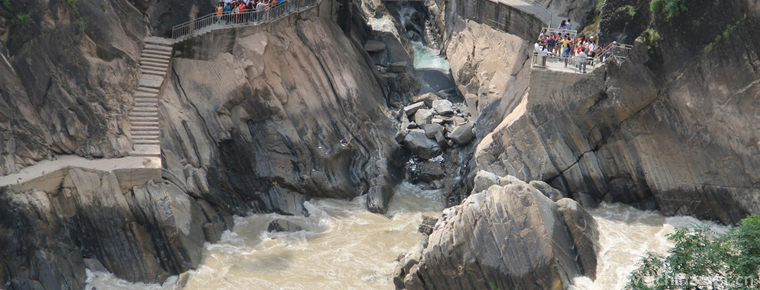
-
Yimeng Mountain Range
Yimeng Mountain Tourist Area is a cross-regional tourism area consisting of the geographical coordinates of Mengshan and Yishan Mountains according to the local tourism department of Shandong Province.
Views: 118 Time 2018-12-08 -
Donglin Temple
Donglin Temple, located at the foot of Lushan Mountain, Jiujiang City, Jiangxi Province, is 16 kilometers north of Jiujiang City and 50 kilometers east of Lushan Luling Street. Because it is east of X.
Views: 124 Time 2018-12-20 -
Zhaozhou Bridge
Zhaozhou Bridge, also known as Anji Bridge, is situated on the Juanhe River in Zhaoxian County, Hebei Province. It spans more than 37 meters across the river. Because all the bridges are built of ston.
Views: 178 Time 2019-03-17 -
Tea Picking Opera
Tea-picking opera is a kind of traditional opera popular in Jiangnan and Lingnan provinces. It was mostly produced from the middle of Qing Dynasty to the end of Qing Dynasty..
Views: 208 Time 2019-04-04 -
Chentang Sherpa Singing and Dancing
Chen Tang Sherpa Song and Dance is a traditional folk song and dance in the Sherpa community of Tibet. Accompanied by "Zhanlie" (Six Strings) and "Biwang" (Huqin)..
Views: 119 Time 2019-04-16 -
Dairy Products Production Techniques
Mongolian phonetic translation. Mongolian drinks. Also known as "white food", that is, dairy products. Milk, mare's milk, goat's milk, camel's milk, cream of milk skin, cheese, dried milk, s.
Views: 131 Time 2019-06-07 -
yangzhou storytelling
Yangzhou Dialect Commentary is a kind of folk art storytelling in Yangzhou dialect, which was developed in the early Qing Dynasty and popular in northern Jiangsu and Zhenjiang, Nanjing and Shanghai..
Views: 96 Time 2019-07-10 -
Left Foot Dance of Yi Nationality
The left foot dance of the Yi people, which is called "Gouzha" in the Yi language, falls to the left foot. Dao Guangnian's Dingyuan County Chronicle says, "It's called falling on the le.
Views: 341 Time 2019-07-13 -
General situation of Chengdu Giant Panda Base
According to the information on the base's official website in May 2017, Chengdu Research Base for giant panda breeding implements a three-level management mode of "Director Office Department (Center) - team". The director's office has 5 leading posts, including 1 Director and 4 deputy.
Views: 225 Time 2020-12-13 -
Guangyuan primary industry
In 2018, the annual grain sown area in Guangyuan City was 311300 hectares, down 0.5% from the previous year. The total grain output was 1.5641 million tons, down 0.4%. Among them, the grain output in spring decreased by 0.7% to 384900 tons, and that .
Views: 362 Time 2020-12-15 -
Guangyuan tertiary industry
In 2018, the total social fixed asset investment in Guangyuan was 67.221 billion yuan, an increase of 14.1% in the same caliber. Among them, investment in fixed assets was 64.721 billion yuan, an increase of 16.4%..
Views: 317 Time 2020-12-15
